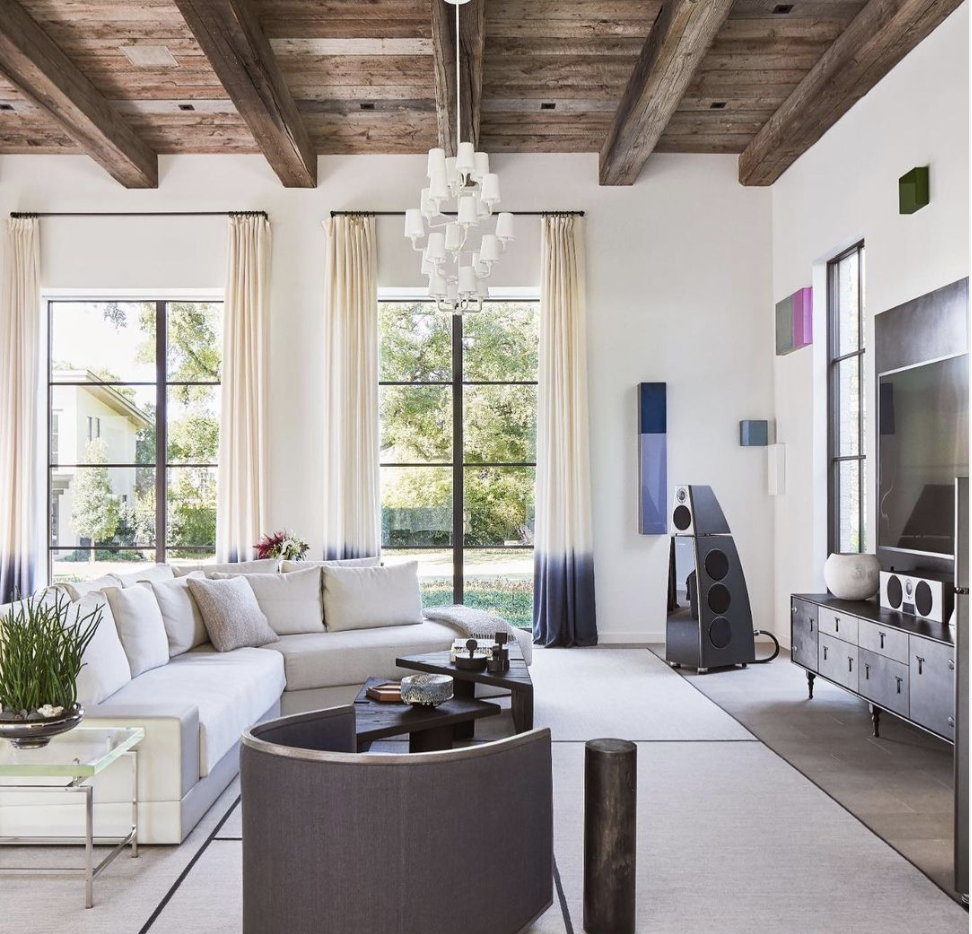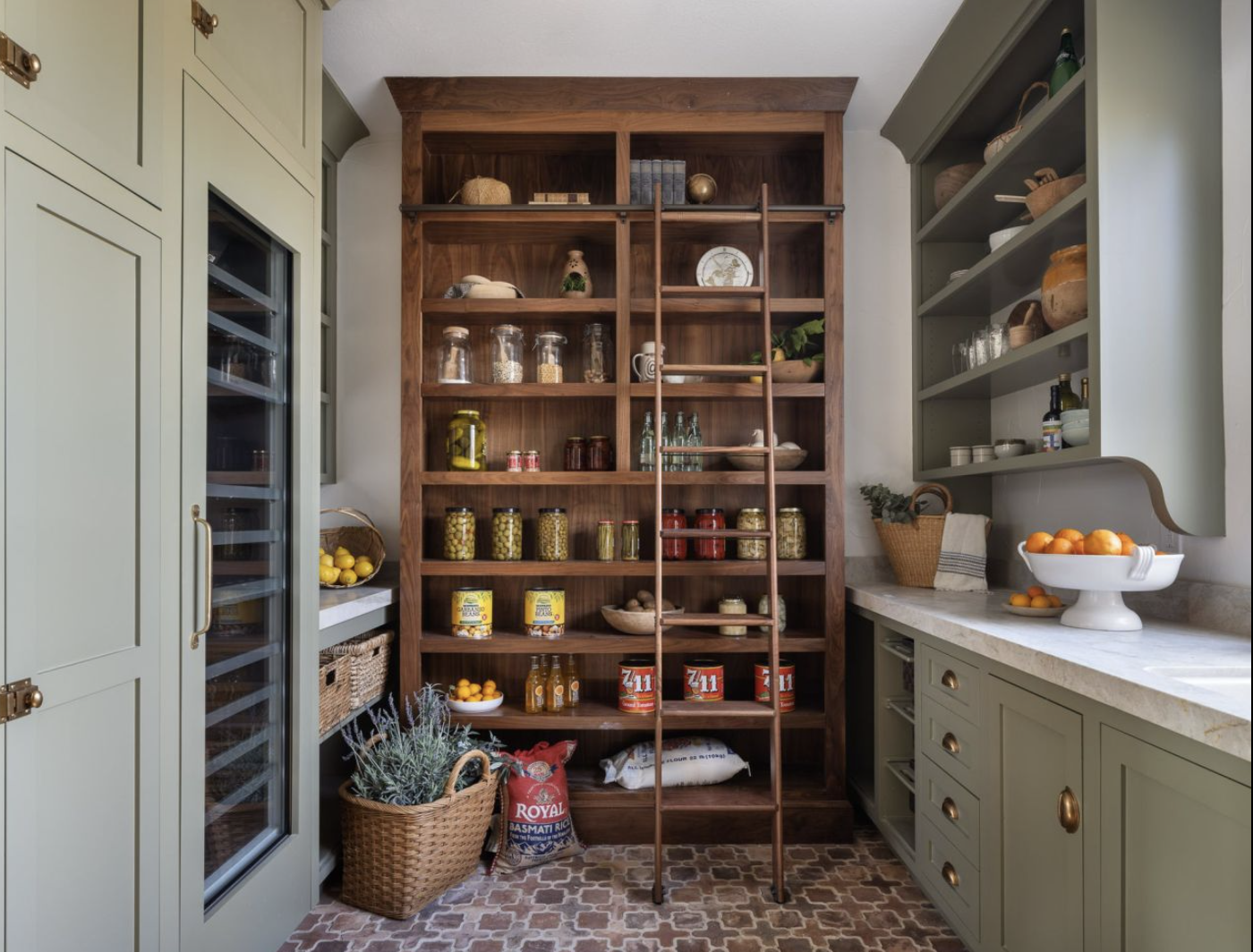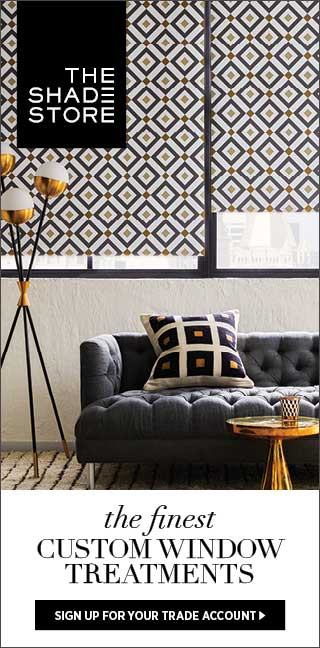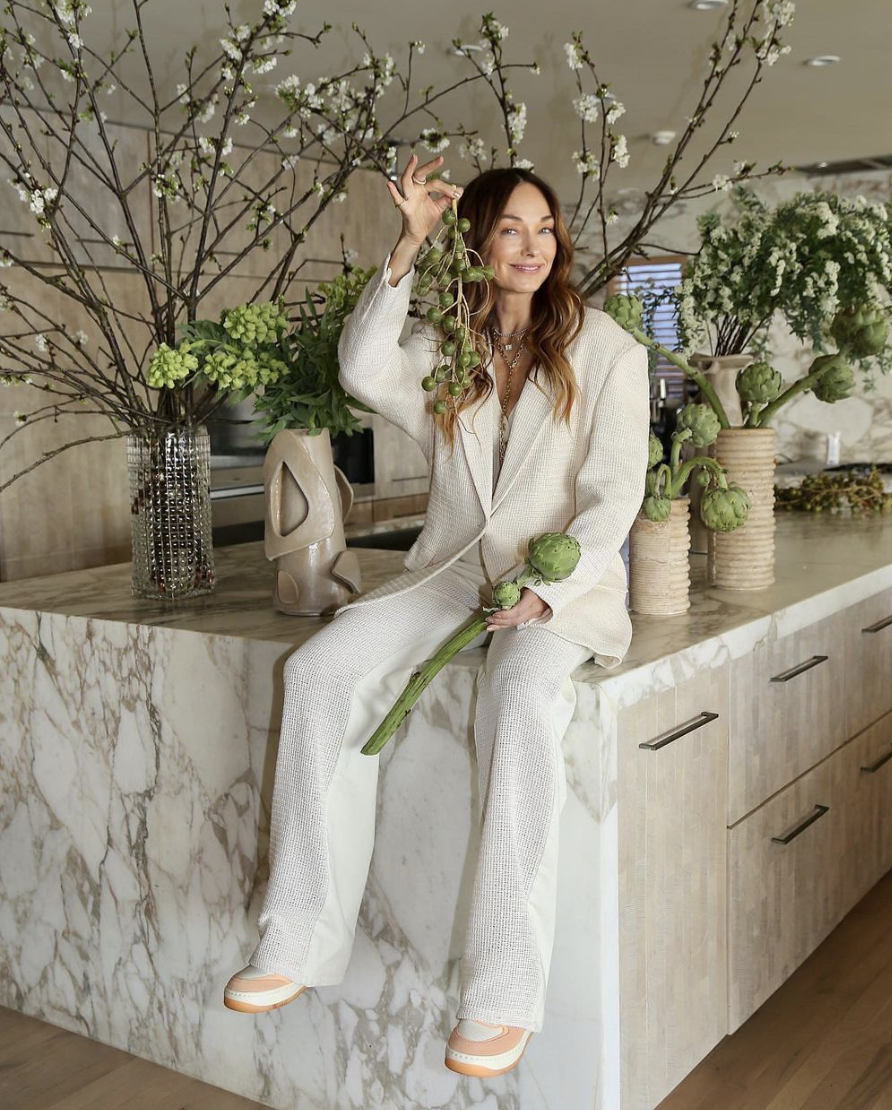
Kelly Wearstler in her Malibu Kitchen
Biophilic
Design
Many designers are practicing this with
or without realizing it!
Are you?
Integrating Biophilic Design
"Nature is my manifestation of God. I go to nature every day for inspiration in the day's work. I follow in
building the principles which nature has used in its domain." Frank Lloyd Wright
In celebration of World Environment Day this June, in which is the United Nations encourages worldwide awareness
and action to protect our environment, we want to motivate you-if you aren't already doing so-to research how you
can implement design concepts to help protect the Earth in your everyday work. This might also include integrating
nature into a space.
Emily Summers: A designer with refined taste connecting with nature.
Not quite sure where to start?
Designer Shannon Ggem has generously shared her studies on Biophilic Design below.
Ggem is an accomplished Interior Designer with a strong understanding of Biophilic design providing thoughtful,
meticulously curated furnishings and tastefully appointed homes.
We recently had the pleasure of interviewing Shannon Ggem, Principal of Ggem Design Co. in Los Angeles, who
shared her experience working in what's referred to as the practice of Biophilic design. Read more below.
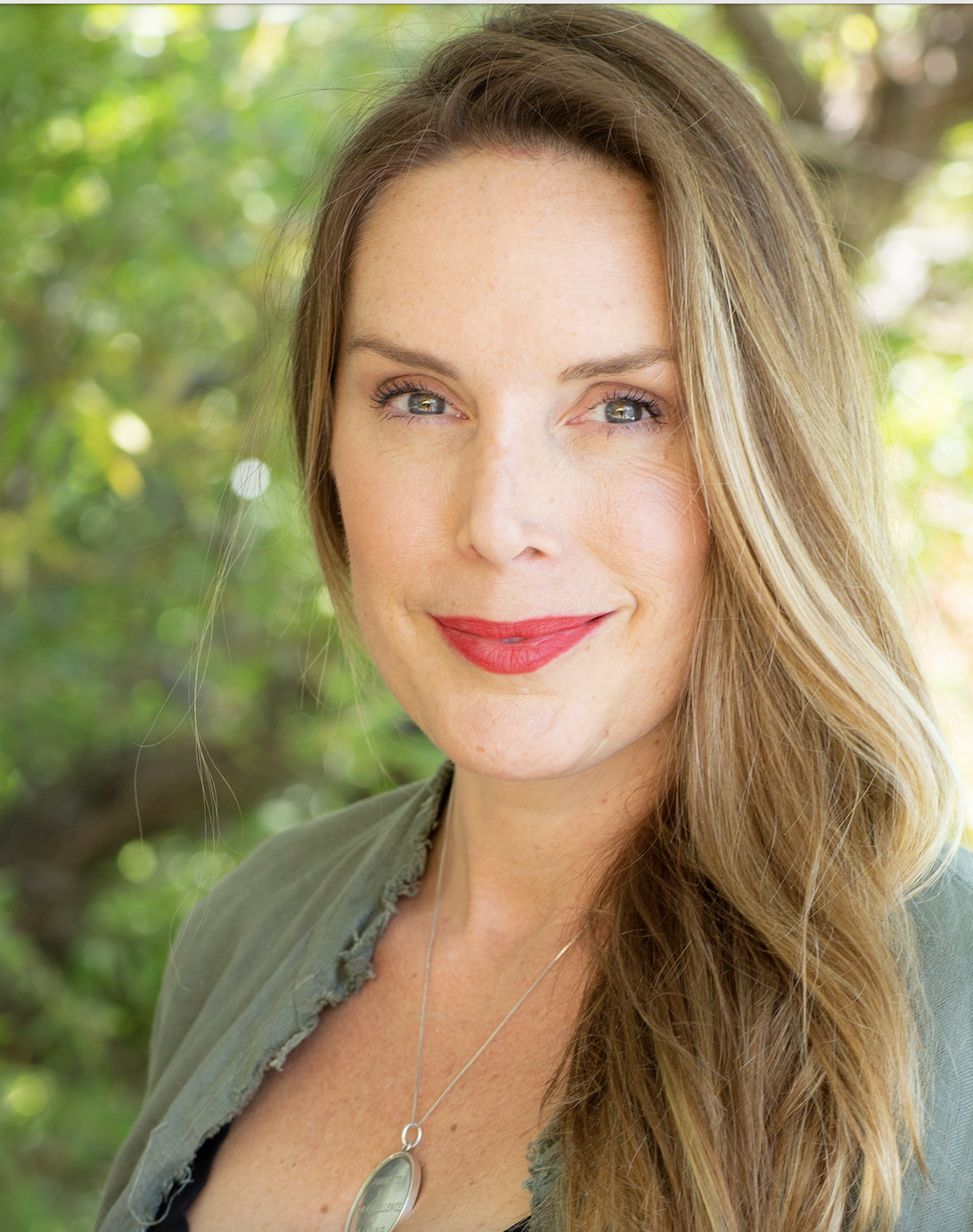
How to Practice the Elements of Biophilia
By Lindsay Field Penticuff
Do you practice Biophilia when working on an interior design project? Better yet, do you even know what the Biophilic design concept is?
We at the Designer Society of America had the same question, so we turned to
Shannon Ggem, Principal of Ggem Design Co., for a little insight into the design practice. Ggem owns a full-service interior design firm in Los Angeles and first discovered Biophilia in 2014.
We had the pleasure of interviewing Ggem to learn more about Biophilia and are excited to share the Q&A below with you.
What is Biophilic design?
“Biophilia is the love of other living organisms and our human nature or desire to seek them out and be among them. When we talk about Biophilic design, it's about nature in general, so living organisms and nonliving ecological components like stone, water, stars, sky, and clouds.”
When and how did you learn about Biophilic design?
Ggem was first introduced to Biophilia in 2014 when she was invited to participate in a feasibility study for a Ronald McDonald House in L.A.
Designers selected for the study were treated to courses in healthcare design, and that's when Ggem was introduced to the work of Roger S. Ulrich, PhD, EDAC, at the Center for Health Design. He is also a Professor of Architecture at the Center for Healthcare Building Research at the Chalmers University of Technology in Sweden.
“It was discovered that people in an environment with a natural view healed faster than people who did not have a natural view or art depicting nature. That was mind-blowing to me that my field could be instrumental in promoting good health and healing. I couldn't even believe it!”
Ggem began reading anything she could about it, honing in closely on the design concept over the past eight years, and decided that if Biophilia was beneficial in a healthcare environment, it would be helpful for clients.
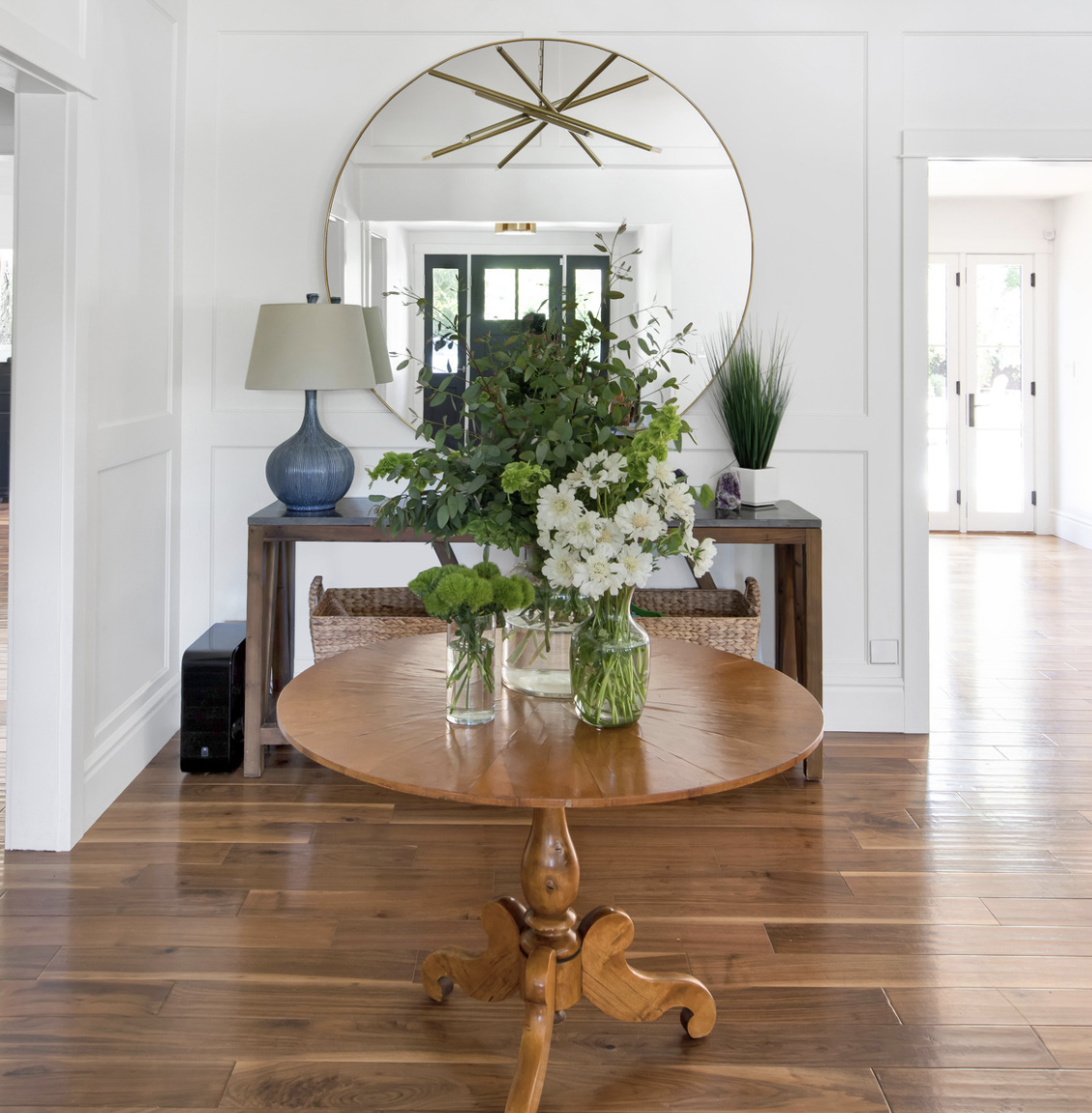
Do clients ask for a space to use Biophilic design?
“Nearly none of them. I have one client out of 100 who has ever asked about Biophilia, so it's very rare that a client would ask for it. But, I'm going to do it nonetheless, because it's going to benefit them and they see it in my work, whether they are aware of it or not.”
What are examples of integrating Biophilic design into a space?
“The main thing to remember about Biophilia is that it is all about creating a bridge back to nature because we are creatures and part of nature as human beings. A famous example is the Great Hall in ‘Downton Abbey.' The tapestries had woven vines in, rugs with flowers, soaring openings, the fireplace, and the light filtering in. All of these things bring nature inside. Think of the Pantheon in Rome, with all the different Roman marbles underfoot.”
“You might also consider implementing sound control elements, such as keeping out random noises like traffic. Things we don't want, we call noise; things we do want, we call sound. You might do that by using heavy drapery like velvet or lined drapery. You can also create other opportunities for noises to die, such as installing carpet to absorb the unwanted noise.”
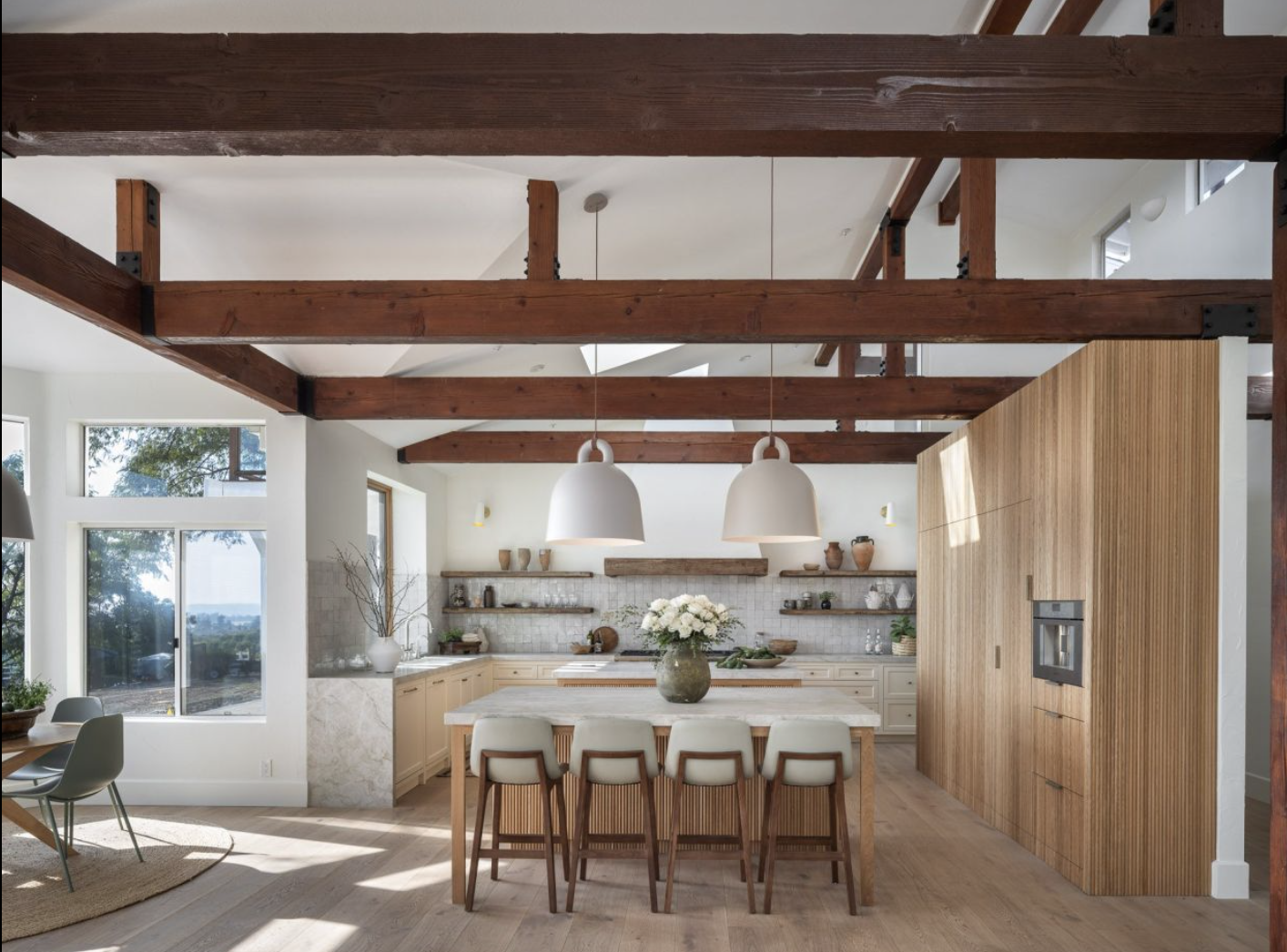
“There's also an opportunity to implement good sound. For example, if there's a big window that faces the backyard and you can hear birds chirping, you don't want to put a big, winged chair that blocks out the right sounds in front of the window.”
“Interior design in kitchens is fairly easy. Most people want to cook with natural light, and most people want to have stone countertops, so you have a mixture of texture with stone, wood, ceramic, or porcelain, things harvested from nature and made by other humans that connect us. You may also have a little view out the window. Kitchens are more apt to be Biophilic in their very nature, whether someone meant for it to be or not. It's accidental Biophilia.”
Is Biophilia the same as green design?
“Biophilia and green design should go hand in hand, but you can be ‘green' when you use recycled things and sustainable renewable and reusable resources without necessarily using the principles of Biophilia, which ties people back to nature.”
“I think we have to all practice sustainable material selection and green principles. And I definitely think that this is something designers and others are doing innately, but tying it to the name Biophilia helps people become more mindful that we are a part of the Earth; we live on the Earth. We need to be able to see it, use it, benefit from it, and benefit from our actions. And I think that's going to save the world!”
What are the health benefits of integrating Biophilic design or concepts?
Biophilic design is a whole-home set of practices.
Examples might include reducing what's referred to as urban light leak in a bedroom, which has been known to harm health.
“One of the things that urban light leak will do is cause weight gain, because there is a digestive process that can't occur without a certain level of sleep, and you won't get it if you have the lights of the city peeking in through your window all night.”
“We know that we can enhance the human experience by bolstering health. Things like lowering the heart rate or raising the heart rate and increasing the energy level; increasing the ability to concentrate; reducing the amount of cortisol released; these are Biophilic benefits.”
Architects practice this method, but are you seeing a turning point for designers practicing this concept more?
“Yes, but I want interior designers to be naming what they are doing without thought. I don't know a lot of designers who would put a big piece of furniture right in front of a window that you would want to open for the cross-breeze, for example. They are naturally doing it anyway because that's what good design is. A lot of good design is Biophilic.
“By naming it, we raise attention to it, and we make sure that we're constantly trying our clients back to the environment that the home is in, which is good for the client's home, good for the client's home value, and also good for the environment that it's in. It's great that we have tools to talk about it and the tools are in this Biophilia body of research. Also, clients love that they will see a little uptick in their ability to concentrate or an uptick in their mood, just based on the beautiful changes that they are taking the time to make in their homes.”
What are the elements of Biophilic design?
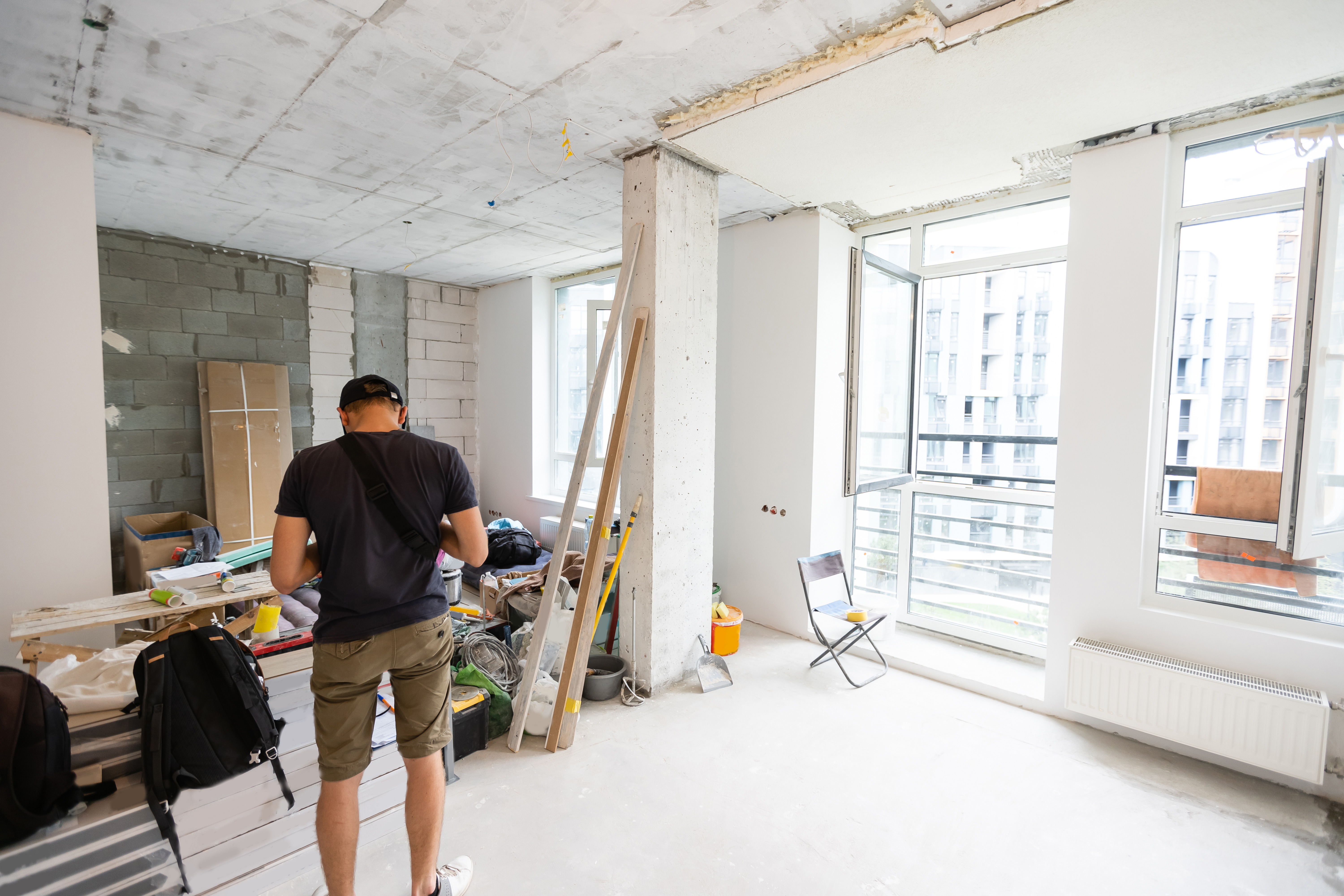
Protecting Your Interior Design Business
Pen-Ex Insurance Brokers and Villanova Insurance Partners have partnered with DSA to create DSAinsure, a policy specifically designed for interior designers. They offer services to quote, bind, issue, and settle claims under one roof—no waiting for third-party approvals. In addition to this, they provide in-house attorney services for contract advice.
DSAinsure insurance provides interior design insurance with your business needs in mind.
If your work involves the following, we recommend having interior design insurance:
• Assisting clients with design services.
• Working with contractors and subcontractors.
• Designing areas without 24-hour supervision.
• Displaying at tradeshows.
• Receiving goods for clients.
• Ordering for clients.
Insurance protects you, your business, and your family assets. Interior designers who assist clients in making their indoor spaces safe, more functional, and aesthetically pleasing should have professional and general liability insurance.
For more information on DSAinsure and to get a quote today, visit Interior Design Insurance
Follow us on INSTAGRAM
Our team here at the Design Society of America (DSA) has been quietly gathering inspirational design photos and posting them on our new Instagram page. But, we can't keep things a secret anymore and we are ready to share what has been going on behind the scenes with you and build our group of followers.
We invite you to follow us for inspiration, education, and information on residential interior design. Be part of the community as we start to build and promote your success through INSTAGRAM.
Don't miss out on this fun way to learn more about DSA's commitment to the success of residential interior designers, grow with us.
